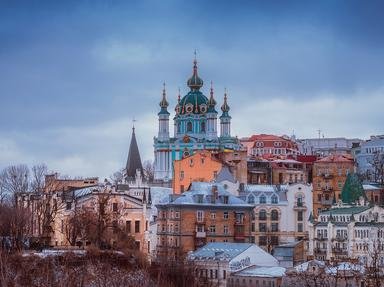Quiz Answer Key and Fun Facts
1. What is the longest river in Ukraine?
2. In what mountain range will you find Mount Hoverla, the highest peak in Ukraine?
3. The Ukraine is a major center of which production for which type of food?
4. In what Crimean city did leaders of the USA, UK and USSR meet in 1945 to discuss the future of Europe following World War II?
5. Which of the following is the main street of the Ukrainian capital Kyiv?
6. In the city of Kharkiv there is a monument to the persecuted kobzars who were purged in the 1930s. What kind of people composed this group?
7. The Seventh-Kilometre Market, one of Europe's largest outdoor markets, started in the 1960s as a flea market. In which city, site of the 1905 uprising featured in Sergei Eisenstein's film 'The Battleship Potemkin', will you find this market?h
8. The city of Donetsk was founded in 1869 by Welsh businessman John Hughes.
9. The Boim Chapel in the city of Lviv features a statue of Christ above its cupola. What is unusual about this sculpture?
10. To which Ukrainian oblast will you need to travel if you want to visit the country's largest national park?
Source: Author
looney_tunes
This quiz was reviewed by FunTrivia editor
agony before going online.
Any errors found in FunTrivia content are routinely corrected through our feedback system.
